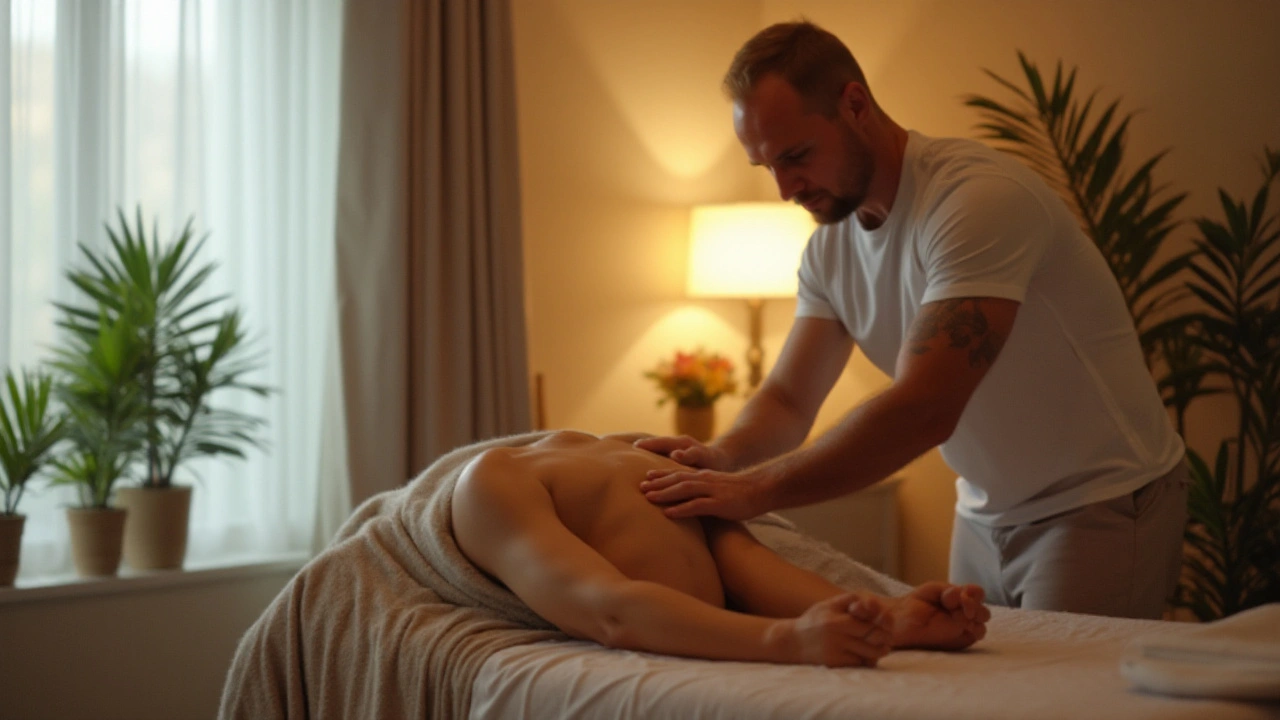Athletic performance depends on training, recovery, and habits outside the gym.
Massage and bodywork speed recovery, reduce pain, and improve range of motion when used right. Use targeted treatments after hard sessions and gentle work on rest days. Match the technique to the goal: deep methods for tight muscles, mobilizing work for joints, and relaxation sessions to lower stress. Planning treatments around training prevents soreness from piling up.
Before a big event, opt for light, stimulating work to wake muscles without causing fatigue. After heavy lifting or long runs, favor techniques that boost circulation and clear metabolic waste. Deep tissue and trigger point work can be useful for stubborn knots but keep sessions shorter near competition. Warm stone or Amma-style work helps soothe muscles and calm the nervous system. If you have chronic pain, talk to a therapist about Ortho-Bionomy, Rolfing, or Feldenkrais approaches that address movement patterns, not just tight spots.
Self-care matters. Use simple tools at home: foam rollers, lacrosse balls, and gentle stretching. Spend five to ten minutes on mobility drills that mirror your sport. Hydration, sleep, and a short cold shower after intense work aid recovery too. Gentle acupressure at home can ease headaches and tight neck muscles from long training days.
Timing and frequency matter. For most athletes, one restorative session per week plus short self-care checks daily works well. Heavy training cycles may need twice-weekly sessions focused on recovery. Light maintenance sessions are perfect between competitions to keep mobility sharp without overdoing it. Track how you feel after different sessions and adjust. Recovery is personal; what helps a runner might differ from what helps a weightlifter.
Injury prevention starts with movement and honest feedback. Therapists trained in structural work can spot imbalances that lead to recurring injuries. Hellerwork, Rolfing, and HIlot practices often combine assessment with hands-on correction and at-home movement plans. Feldenkrais and bioenergetics improve coordination and energy use, which helps your brain run your body more efficiently.
Pick a therapist who listens. Ask about training, techniques they use, and how they tailor sessions to your sport. Describe your schedule, goals, and any pain patterns. A good therapist will teach you simple drills to keep gains between sessions.
Want practical next steps? Start with a short assessment session, commit to two weeks of daily five-minute mobility work, and book a recovery massage after your next heavy training block. Explore articles on this site about specific methods like trigger point work, warm stone therapy, Hilot, and Feldenkrais to find what fits your sport. Small, consistent actions add up fast.
Also track soreness, sleep, and performance numbers in a simple log. If pain worsens or limits daily life, get medical advice before deep work. Many athletes mix therapies: massage for recovery, Feldenkrais for movement, and strength work to fix weak links. Try one change at a time and measure results over two weeks. Consistency beats occasional fixes.
Need help picking a plan? Talk to a local therapist or read our guides to choose what works.

Boost Athletic Performance with Swedish Massage Techniques
Discover how Swedish massage can significantly enhance your athletic performance. Explore the benefits of improved muscle recovery, increased flexibility, stress reduction, and enhanced circulation. Learn practical tips and methods for incorporating Swedish massage into your fitness routine.
Categories
- Health and Wellness (148)
- Alternative Therapies (86)
- Massage Therapy (40)
- Travel and Culture (15)
- Beauty and Skincare (9)
- Holistic Health (8)
- Health and Fitness (5)
- Spirituality (5)
- Other (2)
- Personal Development (2)
Popular Articles


Mastering Your Inner Kahuna: A Practical Guide
Feb, 1 2025

